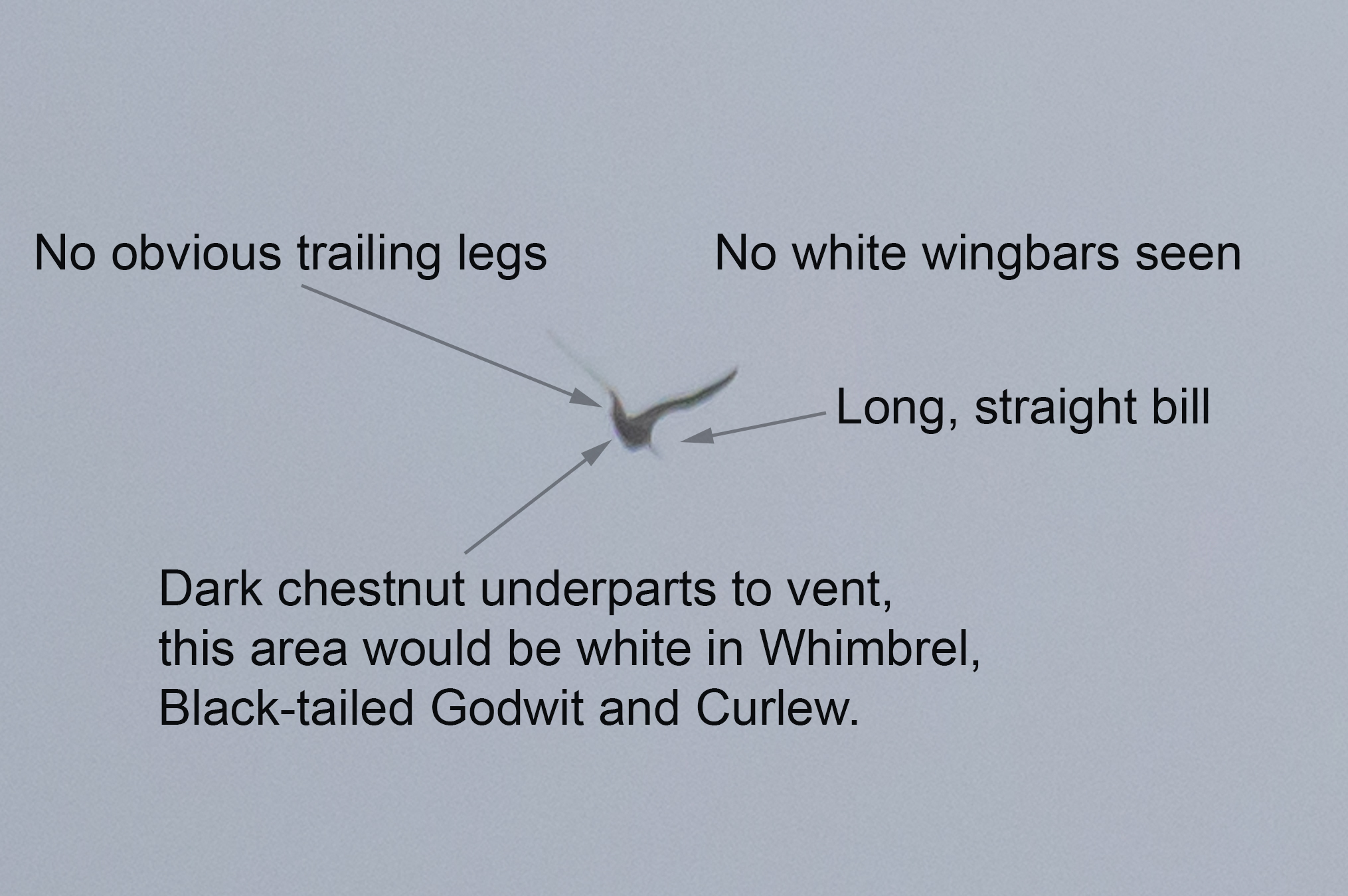A few minutes after 7am on Saturday 25th April I was taking my daily walk around Southfield Golf Course and the Lye Valley in east Oxford. It was my 35th consecutive dawn visit since lockdown began. The low cloud base and cold easterly wind meant I was wearing a coat and gloves and it didn’t feel particularly spring-like. There had been no evidence of any overhead migration at all, when four birds flew over me from behind.
I saw them with the naked eye for a few seconds, with binoculars for a few seconds, and then fired off 6 pictures. Most of the time that I could see the four birds, they were flying away from me and slightly to the right. In terms of size and flight action, all four birds appeared identical.
Naked-eye impressions:
As soon as I was aware of movement above me, I looked up, saw four birds overhead and thought “waders”! This was staggering in itself. I have made 121 visits to the Lye Valley area (including the golf course) over the last 13 months and only saw my first wader species, two Oystercatcher, six days previously. Lapwing would have been a new species for the area and Golden Plover something to be dreamt about. Any other wader species was nearly unthinkable. As the birds passed overhead, I could immediately see that they were medium-sized waders with long wings and bills. In local patch terms, I was in uncharted territory. They were not small sandpipers or Dunlin or Snipe: they were too large. In terms of their size they appeared to be in the Whimbrel-Godwit category.
Binocular impressions:
By now, the birds were flying directly away from me. Probably the worst angle to try to attempt to identify a flying wader. I quickly found them in my binoculars. The birds appeared all dark in the field, I looked for but could not see any white on the wings or tail. No trailing legs could be seen, they did not call. As I was below and behind the birds, I could not see the back of the birds. My guess, on what little evidence to their identity that I had so far, was that they might be Whimbrel. But this was based more on feel, structure and likelihood rather than visible plumage features. Below is an uncropped, unedited picture of the four birds flying north-east over the golf course to show lighting conditions and the height of the birds:

The photographs:
When I looked at the pictures that I had taken, I immediately realised that the four birds were not Whimbrel. The autofocus had locked onto the far-left bird in the flock. The images clearly show that this bird has a long straight bill:

With more photo-editing (heavier cropping; exposure and saturation increase; plus shadow and noise reduction) more features become apparent. This bird appears to have chestnut-coloured underparts and importantly this colour extends to the vent. The underwings look pale, the bill is very long and straight :

Having established that the vent is not white and is chestnut only leaves one conclusion: this bird is a summer plumaged Bar-tailed Godwit. Black-tailed Godwit and all similar species of tringa waders (except Spotted Redshank which is pure black underneath) are white in this area and this would be visible in the images. With the other three birds in the flock appearing identical in size and flight action, it seems safe to conclude that the birds were all Bar-tailed Godwit. FOUR BAR-TAILED GODWIT over Southfield Golf Course, Headington in Oxford city!!! Barwits pass through Oxfordshire in very small numbers in spring and autumn. Any record away from water is good, but to see Bar-tailed Godwit over Oxford city is exceptional.
There was even a slight twist in the tale. Just under an hour later, at 8am, Luke Marriner saw 4 godwits over his local patch, the Oxfordshire Golf Course at Thame some 14km (8.7 miles) to the east, see here. It is quite possible that these were the same birds, although we will never know for sure. The joy of local patch birding is the joy of discovery. Today proved that ANYTHING is possible… given enough time!
Thanks to Ian Lewington, Dave Lowe, Andy Last and Mark Merritt for their input and thoughts.
